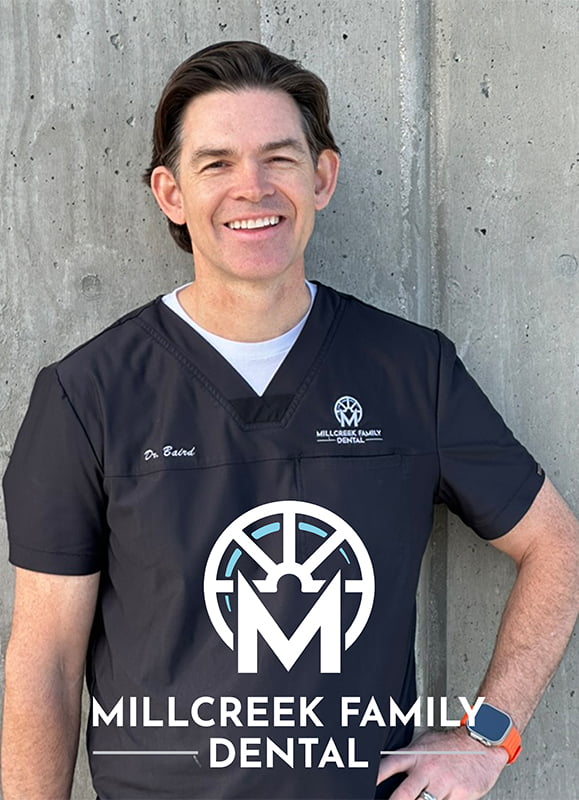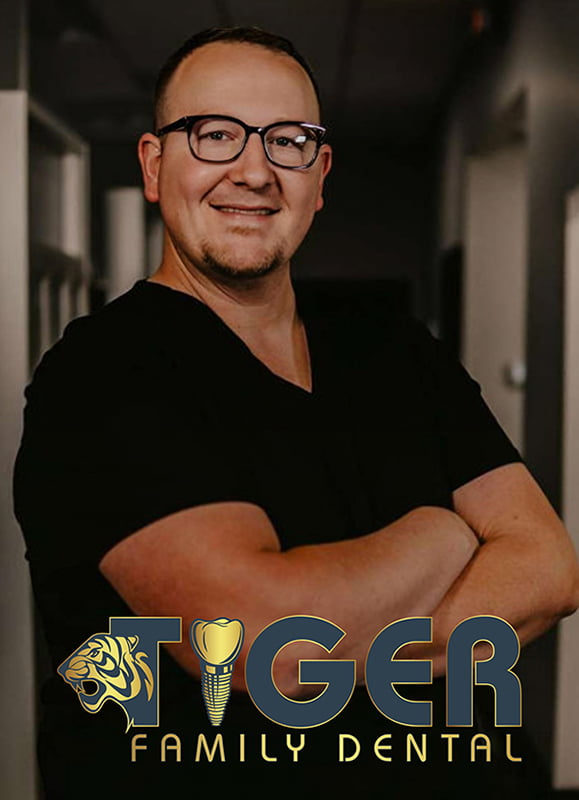Episode 174 – Process vs. Conflict
“For the good of the patients, the ‘us vs. them’ environment in your office has to be reworked.” ~Dr. Bruce B. Baird
It’s a major issue in most offices. The “us vs. them” mentality of the front office and the clinical team. I think we can all agree that we want to have a team where everyone is on the same page and taking great care of patients. The problem is the systems you put in place don’t allow your team to support each other and serve your patients.
Tell me if this sounds familiar: A patient calls at the front desk to set up an appointment. The front desk pulls up the schedule, sees an opening on Wednesday at noon and schedules the patient. As far as the front office is concerned, they’ve taken great care of the patient by getting them the appointment slot that works for them.
But as soon as your assistant sees the appointment in the schedule, it sets them off, “I can’t believe the front office did this! That’s not where the patient should go!” And now your team is irritated and at odds with each other. No one wins.
Now in this scenario, I don’t believe the front office did anything wrong. The problem is the office culture. It’s how the system is set up, and how your team is trained to communicate. The front office just doesn’t have the information they need to meet the needs of the patient and set their teammates up for success.
But here’s the good news, you can fix this problem. I didn’t hear this type of conflict in my office. Why? Because we set up our processes so the front and the back worked together – they held and supported each other – while giving our patients an exceptional experience.
Today I’m going to talk you through how I organized my team and office processes, including:
- Where conflict points happen and why
- How to set up your culture and systems to remove conflict points
- Communication skills for your front and back office
Never miss an episode! Subscribe on iTunes & Spotify.
Visit us at http://www.productivedentistpodcast.com
READ TRANSCRIPT
Hi, this is Dr. Bruce Baird with the Productive Dentist Podcast. hope you guys are having a good year, this is the time of the year to start to plan, plan for the future. We’ll talk about that. We’ll talk about that in a bit but I wanted to talk a little bit about office culture and what I call the front office versus the back office and it’s kind of a, it’s kind of a, it’s not funny, because it’s a, it’s a major disaster in most offices, you’ve got this, you want to have this gel team, you want to have everybody on the same page, yet the systems that you put in place don’t allow that to happen. Now, what do I mean by that? Well, it’s, you know, when, when you have a patient call at the front desk, your front, front office administrator answers the phone and they say, “I want to set up an appointment.” Now, that starts the process that starts the problem right there because who is it that knows about the next appointment better than anybody else in the office, it’s not that person at the front desk, it’s that treatment coordinator who’s been going through treatment with this patient who did the presentation for treatment, and worked out the financial arrangements and everything else and then all of a sudden, you have somebody give you a call and say, “Hey, I’m ready to set up an appointment,” because what ends up happening, we’ve talked about this in our scheduling segments and everything else but it leads to this situation where now this front desk or this administrator puts a patient in Wednesday at two o’clock and I’m just going to use, in Gay’s chair, now and nothing else is said. Now Gay looks and says, you know, this is five days later, a week later, two weeks later, and sees this patient there and realizes that’s not really where that patient should go and so they say, “Well, you know, I can’t believe you put a patient in right here, I can’t believe that they did this.” Great example would be the emergency slots.
You know, most practices don’t really have emergency slots. They just say, “Okay, good luck. If somebody has an emergency, let us know, we’ll try to figure out a way to work them in.” We work in all of our emergency patients period. I don’t care if we have to work through lunch. I don’t care about that but the truth is, rarely did we ever work through lunch, or rarely do we ever work late after five, when we were close at five. Why? Because we set up these times in our morning meeting. These are six places that we could put an emergency patients if need be, okay, we don’t use them. Sometimes we also have inherent in our schedule is to emergency times right before lunch so that if we don’t have an emergency, guess what, you might be able to get off to lunch early and I love that, I don’t want it to be, I don’t want it to be such a stressful deal but here you have the front office just sticks in a patient right at 12:30 because that’s the only time they could come in was 1230 because they’re on their lunch hour. So is that really an emergency? And the person in the back would say, “I can’t believe this. Look at that they stuck this right in the middle of my damned, you know, right lunch, we’re gonna have to see this patient, we’re not going to get lunch.” It’s the same old, same old. I call that the Israeli-Palestinian issue. It’s front versus the back. There’s no, there’s, there is no solution.
Well, you know what, I believe there is a solution and it’s how do you put your systems in place? What is your office culture? How do you take care of your patients, you know, you have to see that patient but we have to be able to communicate it better between our team. So what did we do? Well, about 15 years ago, I said, “Well, this system doesn’t work. I don’t like this front versus the back stuff and there has to be a better way.” So what we began doing, we began saying, and this is verbal skills for your front office and it can be and this is just one one example of what I’m talking about, but Bob calls up and says, “I need to get set up for that appointment.” I’m the front office administrator, I said, “Oh, yeah, Bob, okay. Well, I tell you what it looks like on your treatment plan. You have a couple of crowns that need to be done.” “Yeah, I think so that I think that’s what they were doing next,” meaning they don’t know. “Yeah, I’m ready to get the next thing done. And so they said, “Okay, well, I’ll tell you would Wednesday at two o’clock work for you?” “Yeah, that should be fine, too.” “It’s going to be a couple-hour appointment, but I tell you what I’m going to, I’m going to put you down at this time but I want to clear that with Summer because that’s in Summer’s chair and make sure that she has plenty of time to do everything that they need to do that Dr. Baird and her needs to do. Would that be okay?” Patient’s 100% and say, “Oh, yeah, yeah, that’s fine. All right. Well, I’m gonna have her, if, if everything’s good, we’re going to leave it at that time. I’m going to send you a reminder and we’re going to leave at that time. If she needs more time, she will reach out and call and talk to you, okay.” “Okay, great.” Okay it’s done.
Now, let’s put on the schedule. Whose responsibility is the schedule? Well, the responsibility that schedule is no longer the front office, it’s no longer the front office. It now is Summer’s, the monkey has been put on summers back. Why? Immediately when this appointment is made, our front office Julie will send a message back to Summer, in our instant messaging and say, “Summer, I put Bob at three o’clock and told him if we need to change it that you would reach out to him.” Now Summer has the opportunity to reach out and say, “You know, gosh, we need more time. This is a surgical. We already have Endo over here in room two. I know Dr. Baird is going to be behind there.” All the things that Summer knows because she has intelligence about that. She’s going to handle it and she’ll call Bob. Now how does she have time to call Bob? Well, let me tell you, Summer, and Gay and Tamra and Shannon, they all, they all confirm their own appointments every day. “You got to be kidding, what is the front desk do?” Well, trust me, they the best relationship in the office is between that treatment coordinator and that patient and we’ve tried to keep them together. So now Summer reaches out, she talks to him but what I don’t ever hear anymore is this conflict, is this front versus the back were Gay might say, “Well, I can’t believe they put this person in here.” “I don’t want to hear that Gay, did, did the system work? Did they send you an email or did they send you a text message?” “Yeah, they did.”
“Okay, now it’s on your back.” You look at the schedule, you know where things should be to, for us to be most productive and when we do that, what ends up happening is now the front and the back are working together to get this accomplished and the patient is getting the best experience possible. No question about it is and so well, how on earth do they say it? Well, let’s just say I’ve got I work out four treatment rooms, it could be two, you could have two treatment coordinators, I happen to have four. So in a day, Gay might see two big cases, pretty long cases, Summer may see seven, Shannon may see eight or 10 and but they have time to call the patients for the next day and to tell them about their appointment, tell them about any financial arrangements, tell him all the things that they need to tell him that the front office the treatment, the the administrators up front, their administrators, they’re answering the phone, they’re trying to answer questions, but it’s better if there’s a question asked about a treatment is to send a message back to Summer, Gay and have them handle it and deal with it. All of a sudden, now you’ve got an office that is had conflict all the time, and you’ve changed it to an office with no conflict, where the front desk is putting her arm around the treatment coordinators and treatment coordinators putting their arm around the front desk and, you know, those are the things that leads to that, you know, leads to harmony. The us versus them environment has to be reworked. It has to be redone. It’s very natural for that to happen. When somebody sticks something right in the middle of your schedule when you don’t know what’s happening, I even get upset about it. I’m like, they just put a person in my emergency right there at lunch and I would see that and that would bother me. Gay would say, “Don’t worry about it. It’s real simple. They just broke a tamp, I’ll have it fixed in five minutes,” or “Yep, it’s a big deal but they have to approve it.” The people responsible for the schedules are the treatment coordinators in the practice. So that’s part of that because it’s not really a lack of clarity. The front just doesn’t have that information, you know, whereas my treatment quarter has perfect clarity about the case and where we’re headed. Now you know what if you have somebody again the us versus them, where you have an employee that is just not working hard, that’s not part of the team.
Well, I love one of our one of our coaches years ago said, you know, if you can’t play at our level, you don’t get to play on our team and how true is that? I mean, if if the team is upset about somebody in the practice not working, or, or sloughing off, and you’ll see that over a period of time, what do we do for that? What what do we do? What how do we change? Well, we have to confront that situation, I may bring it up, I may, I may go talk to that employee about tracking and looking at numbers and all that but the truth is, the team is the one who’s going to eventually make it to where that person is really not a part of the team anymore and it becomes very easy to let those people go or to invite them to their happy place. They’re not happy, they’re taking advantage of other employees and that as a leader, you have to say, Hey, I’m going to give you a chance to straighten this up. But these are the things that you’re going to have to do. And then if it doesn’t happen, we invite them to their happy place. So you can have personality conflicts but what then happens, what does is you’re getting rid of a toxic work environment where people are constantly after each other. Yeah, you can have personality conflicts, relationship conflicts, that’s going to require what I call a “Crucial Conversation”, which is a great book to read. Crucial Conversations are what drive your business forward, you have to be able to have a crucial conversation. Nobody wants to have them. Nobody wants to tell somebody that they’re not doing something a certain way. But you have to learn a challenge, you read that book.
Again, I talked before about doctors ego that that you just have to get that out of the way and I really believe you know, there are some team members, you know, I really believe there are some team members that feel undervalued, what I try to do is I try to help them, I try to help them prove their value to themselves because if you feel like you’re undervalued, most of the time, you’re blaming others for what you could actually do to change and I try to, to bring anecdotes that have my own personal experiences, like saying, “You know, I did that before, I found that it took me actually having to have a conversation to solve this problem.” Does that make sense? It’s it’s the these are the things and the final thing is getting mixed messages from leadership, you got to stay consistent, you got to know where you’re going, you have to know what your y is, you have to say this is going to be the best practice. I started in 1984 with I want this to be a model practice, meaning a practice that could be duplicated anywhere we never did but I wanted it to be so structured that everyone could come in and again, early on, not so good at it but we learned over a period of time, don’t beat yourself up. You know, if you’re having problems in the practice, don’t beat yourself up but it’s time to be introspective. It’s time to look inside yourself and decide if we can help you get Productive Dentist Academy. That’s what we do.
If we can get you out of yourself and into others your productivity quadruples, we’ve seen practices go from 800,000 to 4 million in three years. Why? Because we got out of our own way and so those are the things that I wanted to share with you guys today. Tell your friends about Productive Dentist Podcast. So reach out to us bruce@productivedentist.com if you have a question, I get questions all the time and that’s where a lot of the podcast content comes from somebody asking a simple question and or a complex question. I’m okay with either one. So anyway, have a great holiday season. I hope to see you guys in our next meeting.
Have a great experience with PDA recently?
Download PDA Doctor Case Studies


















